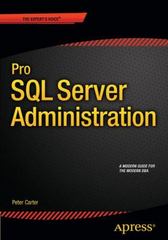Answered step by step
Verified Expert Solution
Question
1 Approved Answer
Unfortunately, you never a receive a response from your neighboring island. As a last ditch attempt, you transmit the message as ' H ' ,
Unfortunately, you never a receive a response from your neighboring island. As a last ditch attempt, you transmit the message as Helpand spaced out in one minute intervals. You can assume the same bit flips as in the previous example occur.
From a certain point on your island, you notice a somewhat nearby island at a distance of kmPerhaps it is inhabited, so you would like to transmit an alert message and see if there is a response.
After finding more parts in your backpack, you construct a basic wireless communication system which can also transmit data. Despite the challenges of an unshielded environment prone to interference, you aim for a data transmission rate of up to MbpsThrough some resourceful experimentation, you discover that your wireless setup supports frequencies of up to MHzExceeding this could lead to intersymbol interference, corrupting your data.
To tackle this, you decide to use a multilevel bipolar NRZ modulation scheme, achieving the required bitrate within the frequency limitations of your wireless system. Additionally, your memory serves you well from your days of mastering communication systems, specifically error correction and detection with Hamming codes. To enhance the reliability of your makeshift communication system, you implement a Hammingconfiguration
Upon completing your setup, you decide to test it by transmitting a simple message in binary ASCII format: "Help!" However, as fate would have ita lightning storm passes over the island, introducing noise into your wireless signal. This noise results in the flipping of bits in the transmitted message during PCM decoding, marked in red:
Which of the following statements is true regarding the errorcorrecting stage?
The error correction stage can correct all bit errors.
The error correction stage cannot correct all bit errors.
Step by Step Solution
There are 3 Steps involved in it
Step: 1

Get Instant Access to Expert-Tailored Solutions
See step-by-step solutions with expert insights and AI powered tools for academic success
Step: 2

Step: 3

Ace Your Homework with AI
Get the answers you need in no time with our AI-driven, step-by-step assistance
Get Started


